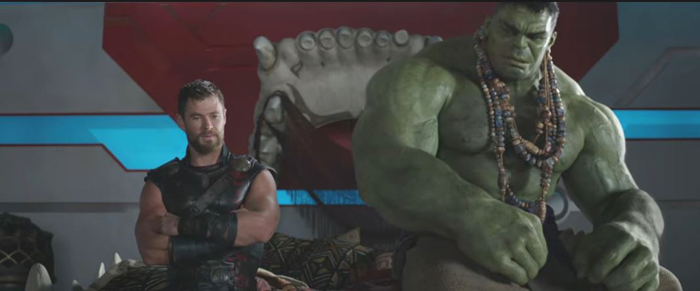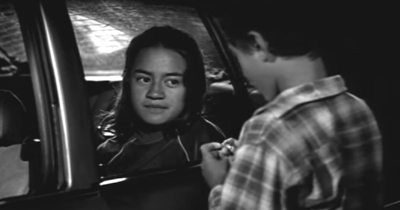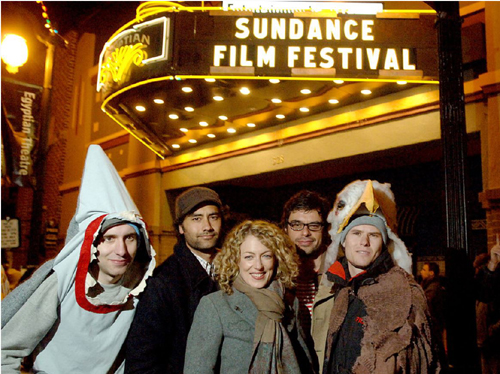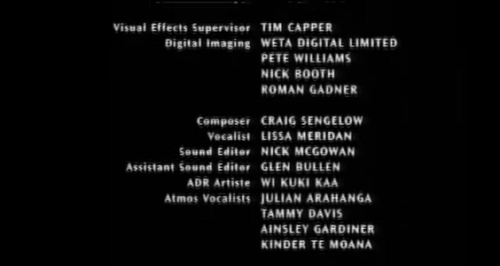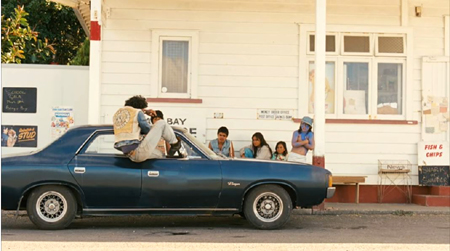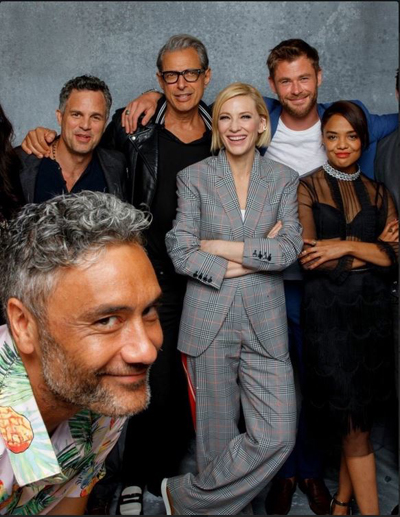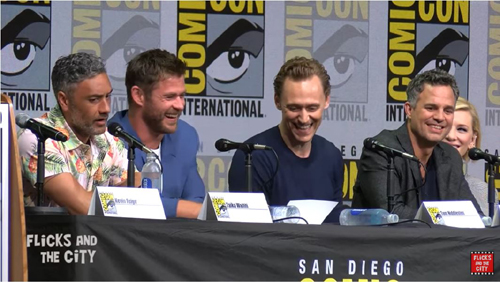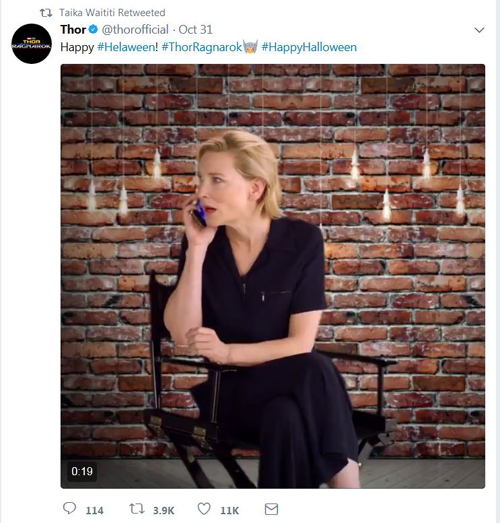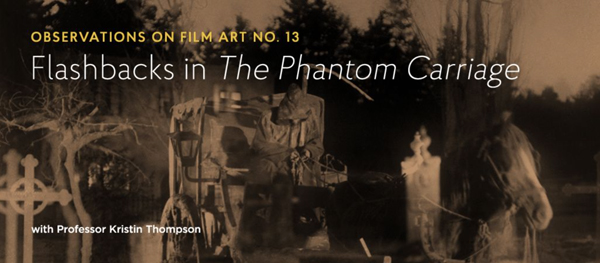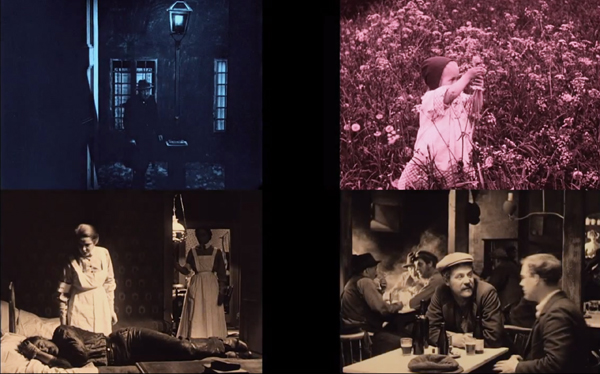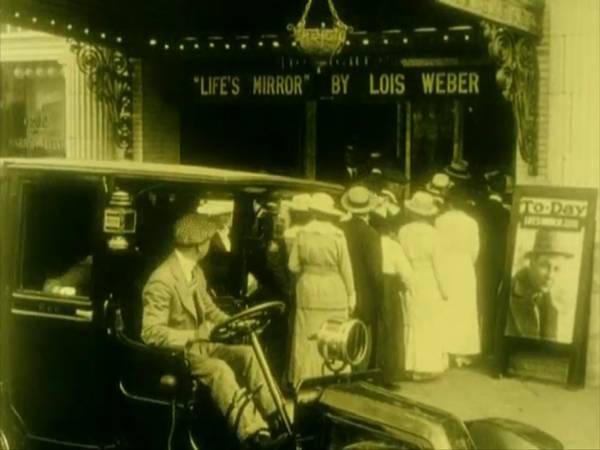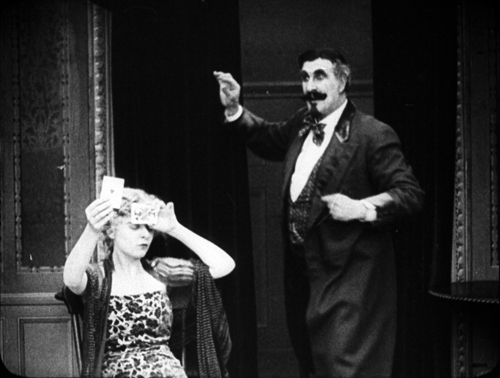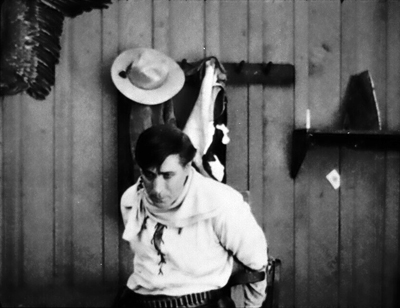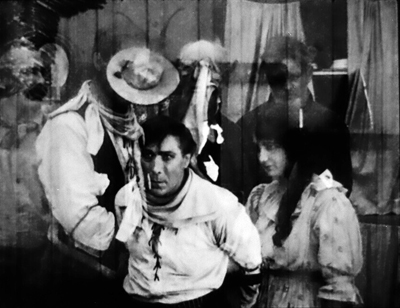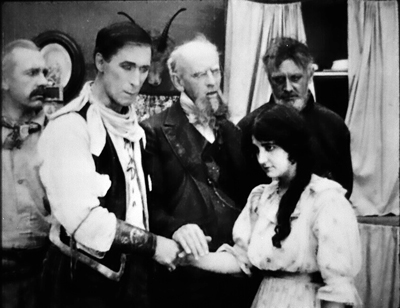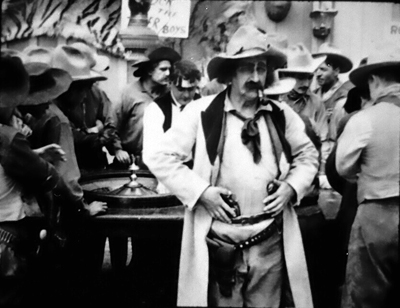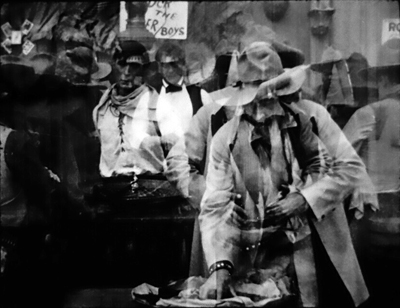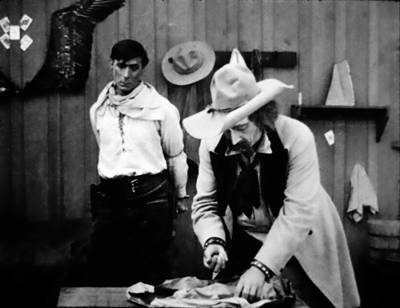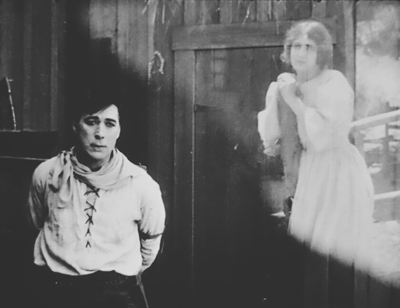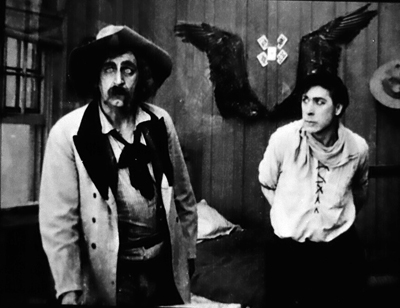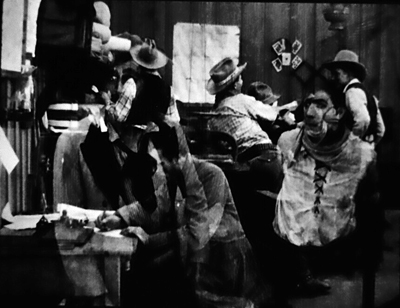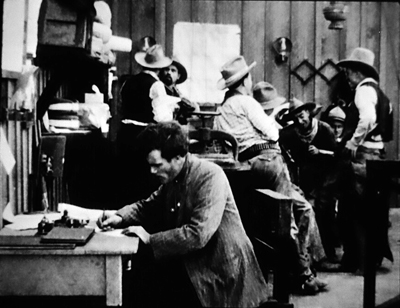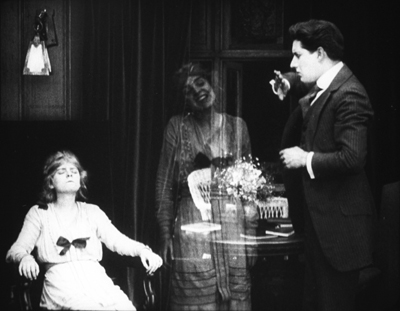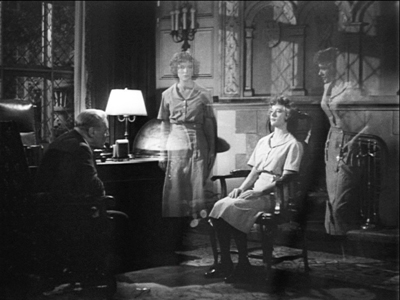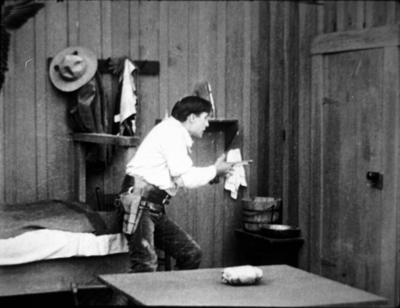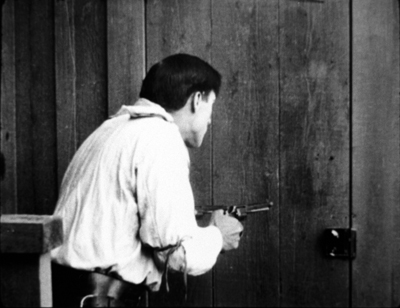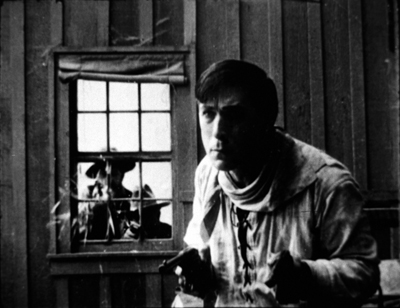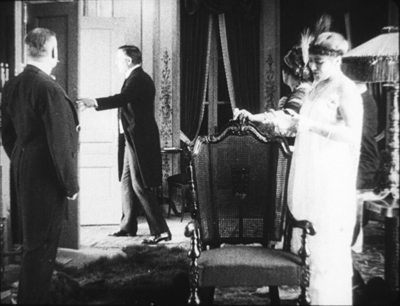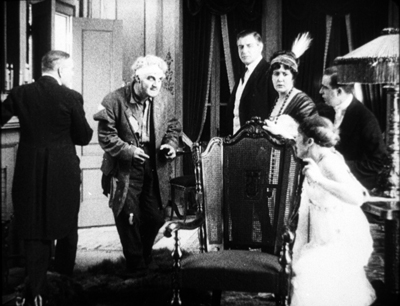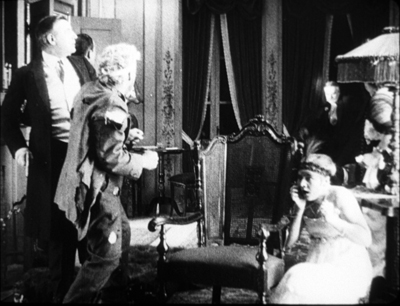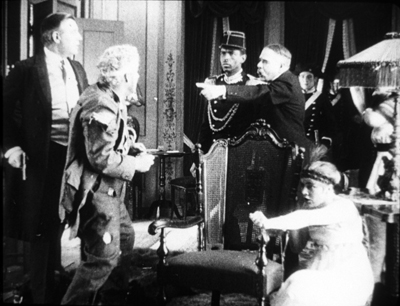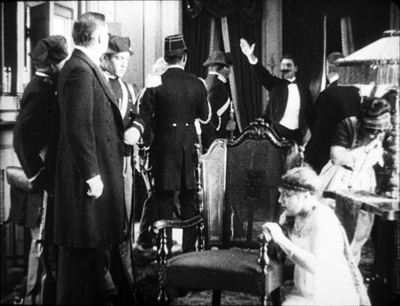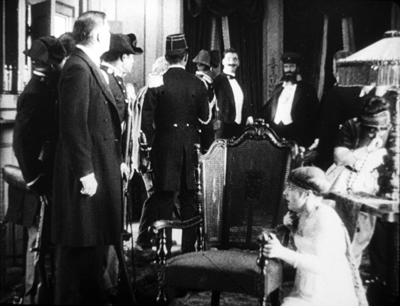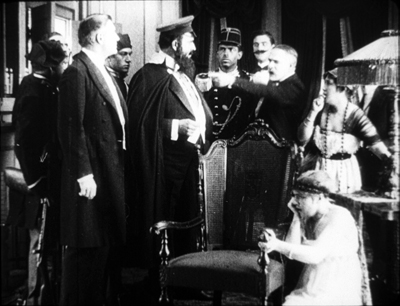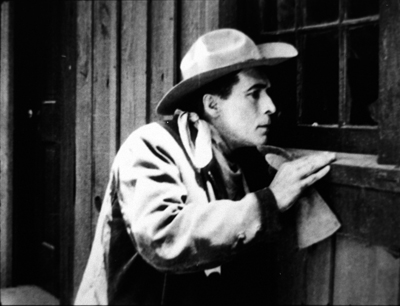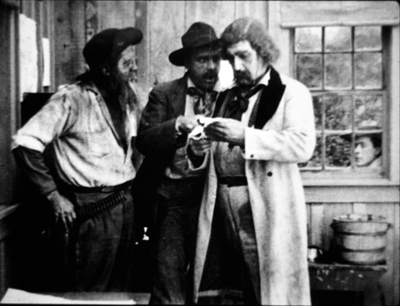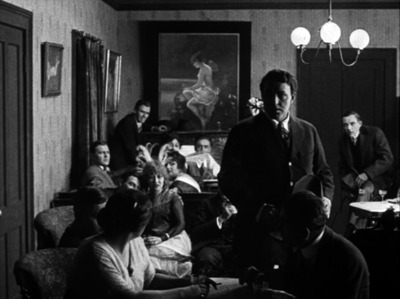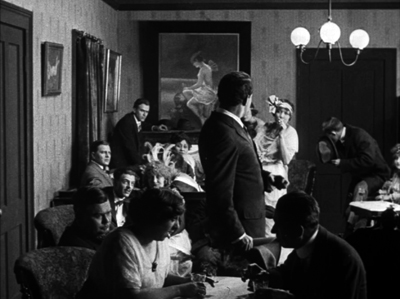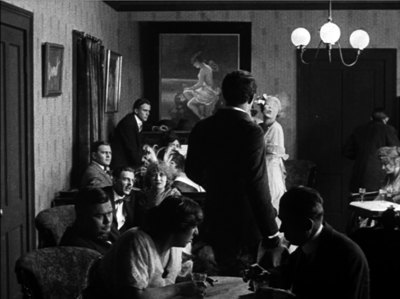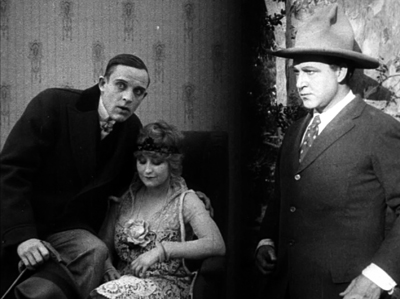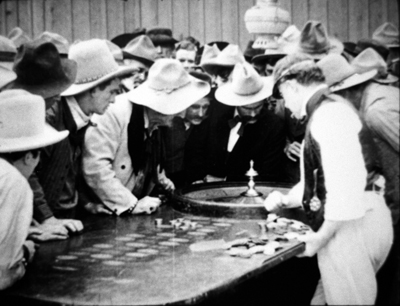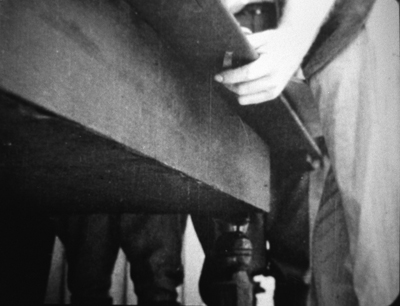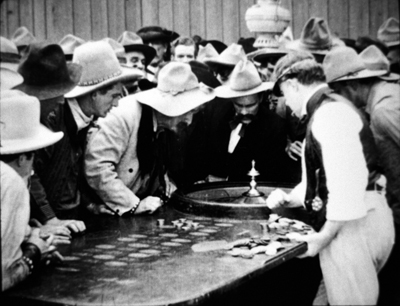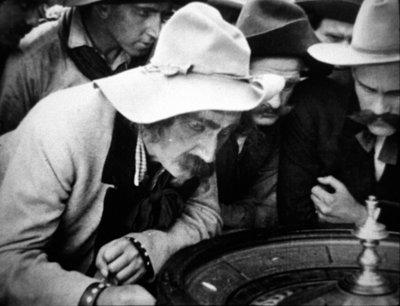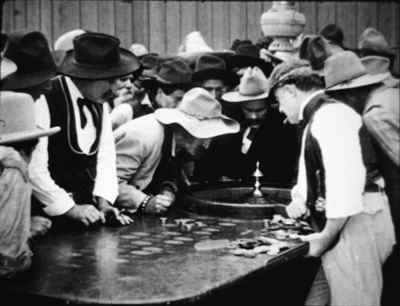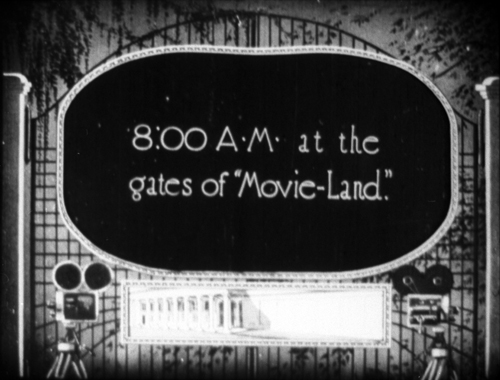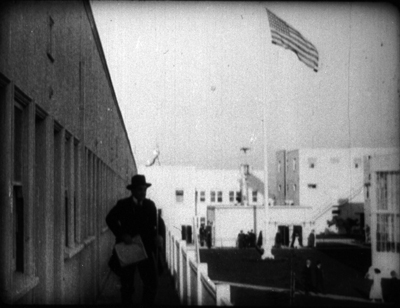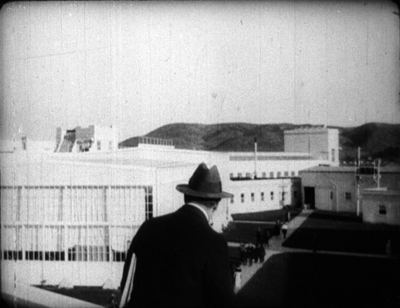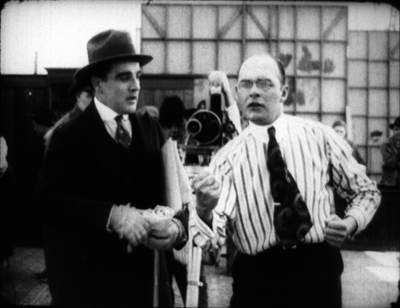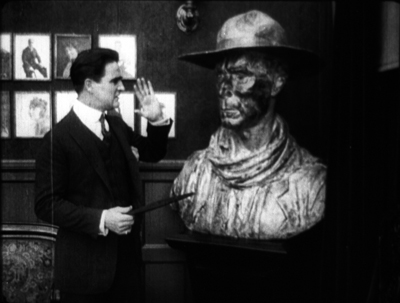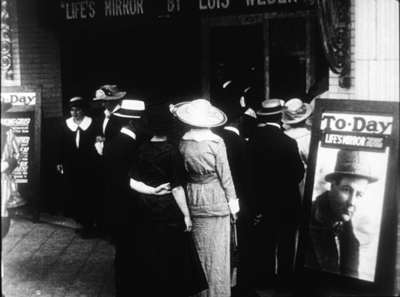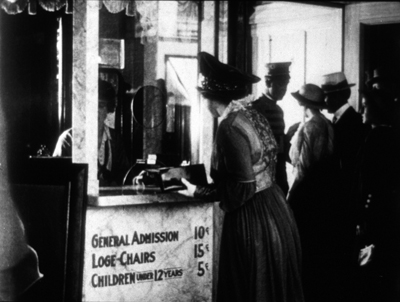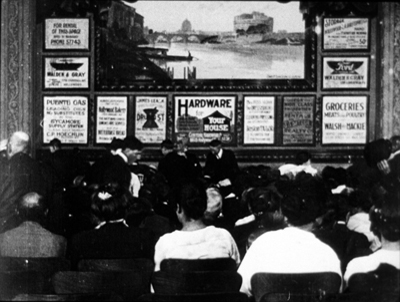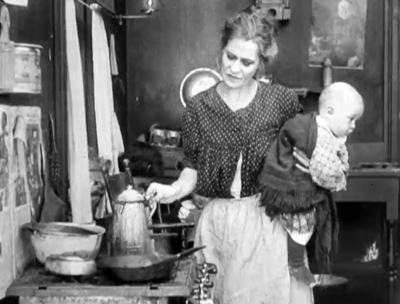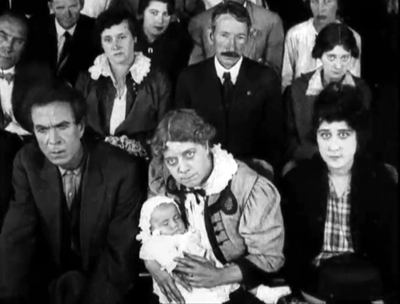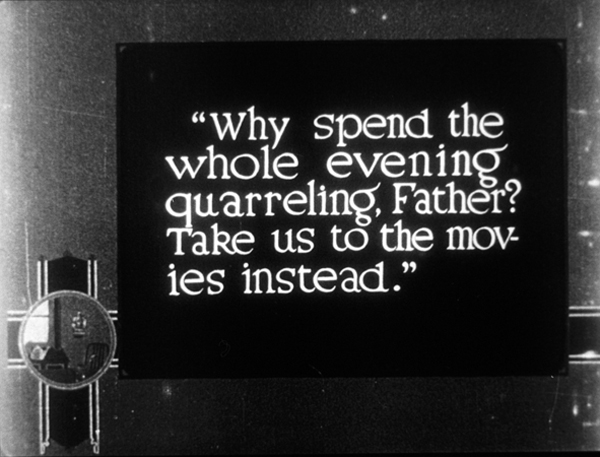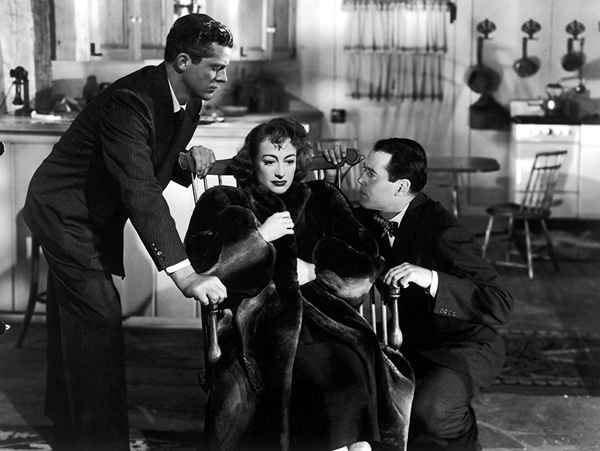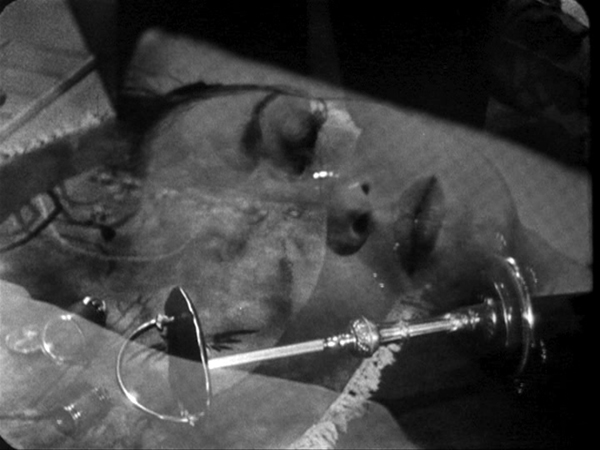Archive for November 2017
Taika Waititi: The very model of a modern movie-maker
Thor: Ragnarock (2017).
Kristin here:
Not every independent filmmaker secretly longs to direct a big Hollywood blockbuster. Jim Jarmusch made a name for himself 33 years ago with Stranger than Paradise (1984) and won well-deserved praise for Paterson last year. Like other independent directors, Hal Harley turned from filmmaking to streaming television, directing episodes of Red Oaks (2015-2017) for Amazon.
Still, in recent decades the big studios have picked young directors of independent films or low-budget genre ones to leap right into big-budget blockbusters, and those directors have taken the plunge. Doug Liman’s Go (1999) was one of the quintessential indie films of its decade, but his next feature was The Bourne Identity (2002). Colin Trevorrow’s modest first feature Safety Not Guaranteed (2012, FilmDistrict) led straight to Jurassic World (2015, Universal); Gareth Edwards’ low-budget Monsters (2010, Magnolia) was directly followed by Godzilla (2014, Sony/Columbia) and Rogue One (2016, Buena Vista); and Josh Trank went from a $12 million budget for Chronicle (2012, Fox) to ten times that for the $120 million Fantastic Four (2015, Fox).
Something similar happens occasionally with foreign directors. Tomas Alfredson went from the original Swedish version of Let the Right One In (2008, Magnolia) to Tinker Tailor Soldier Spy (2011), and the Norwegian team Joachim Ronning and Espen Sandberg, after making Bandidas (2006, a French import released by Fox) and Kon-Tiki (2012, a Norwegian import released by The Weinstein Company) were hired to do Pirates of the Caribbean: Dead Men Tell No Tales (2017, Walt Disney Pictures) and the upcoming Maleficent 2.
Recently women have followed this pattern as well: Patty Jenkins, going from Monster (2003, Newmarket Films) via a long stint in television to Wonder Woman (2017, Warner Bros.), and Ava DuVernay, from two early indie features and Selma (2014, Paramount), again via television, to A Wrinkle in Time (forthcoming 2018, Walt Disney Pictures).
Some of these directors have made the transition smoothly and successfully and some have not. Perhaps the most spectacular success has been that of Christopher Nolan, who went from Memento (2000) via Insomnia (2002) to Batman Begins (2005) and far beyond. But more about him later.
Why have indie filmmakers been able to make this move into the mainstream, often quite abruptly? What about their work appeals to the studios? Of course, there are a variety of reasons, depending on the project and the producers involved. It might be worth following one filmmaker’s career up to the transition to see if there are any clues.
A recent example of this trend is the box-office hit Thor: Ragnarok (released November 3), in the Marvel universe, owned by Walt Disney Studios. Its director, New Zealander Taika Waititi, had directed a handful of modestly budgeted films in his native country. The most successful of those, Boy (2010) made $8.6 million worldwide. After a month in release, Thor will cross $800 million this coming weekend, if not before, and will ultimately gross more than 100 times as much as Boy.
Every filmmaker takes his or her own path before making this leap into blockbuster projects. Waititi did not set out with the ambition to direct a superhero movie with an absurdly high budget. But his career was so full of luck early on that it hardly could have gone better if he had planned it. If you sought a model path to blockbuster fame, you could do no better than to imitate him.
Start by getting nominated for an Oscar
Waititi was actually preparing for a career as a painter, but he was also doing a lot of performing: stand-comedy and film and television acting, perhaps most notably as one of the young flatmates in Roger Sarkies’ 1999 classic, Scarfies. His first brush with superhero movies came with a small role in Green Lantern, 2011. He also, however, made some short amateur films for the 48-Hour film project in Wellington. (Possibly I saw one of them, since I attended the program of shorts during my first visit to Wellington in 2003.) That led to his first professional film, the 11-minute Two Cars, One Night (above).
Virtually all indies made in New Zealand are funded by the New Zealand Film Commission, and in this case the NZFC’s Short Film Fund financed Two Cars. In January, 2004 it premiered at the Sundance Film Festival, with which Waititi soon became closely linked. It’s available on YouTube, but be prepared to pay close attention if you hope to understand the thick, rural Kiwi dialect of the charming non-professional child actors. (Waititi’s Wikipedia entry has a good rundown of his television and other work as well as his films.)
The film got nominated for a best live-action short Oscar, and although it didn’t win that, it picked up prizes from the Berlin, AFI, Hamburg, Oberhausen, and other festivals, as well as the New Zealand Film and TV Awards. In fact, the short effectively drove Waititi into filmmaking, as he described in a 2007 interview.
I spent years doing visual arts, doing painting and photography, and throughout that whole time I was acting quite a lot in theater and New Zealand film and television. But for that whole time I wasn’t really sure which one of those artforms I wanted to concentrate on, and eventually just started tinkering around with writing little short films. I made one short film which ended up doing really well, and then suddenly I was propelled into this job as a filmmaker. But actually I didn’t want to be a filmmaker, I just wanted to make short films to try it out! I still don’t really think I’m a filmmaker.
Perhaps not then, but the idea must be quite plausible to him by now.
Get support from the Sundance Institute ASAP
The short and its Oscar nomination launched Waititi’s move into feature filmmaking. In 2005 it was announced that Waititi had been accepted into the Sundance Directors and Screenwriters labs to develop A Little Like Love, which later became his first feature, Eagle vs. Shark.
It was really good for getting my feature made, because I kinda got fast-tracked in the funding process. In New Zealand, the only way of getting a movie done is through the Film Commission, the government agency that funds everything. So I got nominated for the Oscar in March 2005, I wrote the screenplay for Eagle vs Shark in May, then we went to the Sundance Lab in June, got funding from the Film Commission in August, and we were shooting in October.
In January, 2007, Eagle vs. Shark premiered at Sundance. It got a small release in the USA. Having followed filmmaking in New Zealand during work on my book The Frodo Franchise, I saw it here in Madison in a nearly empty theater.
Asked in the same interview about his experiences in the Sundance Directors and Screenwriters labs, Waititi replied:
It was just totally amazing, totally amazing! I think the biggest thing I took away from the lab was finding the tone for the film. In the marketing, it’s going to be presented as a comedy, and I think that’s where a lot of the problems will lie. Even in the criticism of the film, people don’t get that it’s not pure comedy.
The power of the Sundance Institute in supporting first feature films and in others ways promoting independent production worldwide is surprisingly little known. Most obviously the labs have aided the development of American indies like Miranda July’s Me and You and Everyone We Know (2005), as well as supporting Damien Chazelle’s Whiplash (2014) through the Sundance Institute Feature Film Program. The Institute’s impact goes beyond the USA. The first film made in Saudi Arabia, Haifaa Al Mansour’s Wadjda (2012), also was aided by the Sundance Institute Feature Film Program. Sundance’s website emphasizes that the grants and participation in labs is not just for a single film:
With more than 9,000 playwrights, composers, digital media artists, and filmmakers served through Institute programs over the last 35 years, the Sundance community of independent creators is more far-reaching and vibrant than ever before.
If you have been selected for any Institute lab program or festival, you are a member of this community. Sundance alumni receive support throughout their careers, including access to tools, resources and advice as well as artist gatherings and more. Alumni are also encouraged to actively contribute to the Institute’s creative community and to our mission to discover and develop work from new artists.
Waititi’s second feature, Boy, which premiered in January, 2010, carries the credit, “Developed With The Assistance Of Sundance Institute Feature Film Program.” What We Do in the Shadows, co-directed with comedy partner Jemaine Clement, premiered there in January, 2014, though without a credit to Sundance, but his most recent independent feature, Hunt for the Wilderpeople (January, 2016) gave “Special Thanks” to the Sundance Institute.
Asked about Sundance in 2016, when Hunt for the Wilderpeople had just premiered, he declared,
I’ve got a good relationship with them, I love coming here, and I do think that this festival suits my films rather than most of the festivals I’ve been to. I’m not going to Cannes, you know.
Waititi has taken his membership in this exclusive group seriously. In 2015, Sundance created the Native Filmmakers Lab, aimed at supporting Native American and other Indigenous filmmakers. Such support had been a policy in choosing filmmakers to participate in labs up to that point, and Waititi is mentioned as one of past participants. He also is listed as the only individual among a list of major institutions contributing to the Sundance Institute Native American and Indigenous Program:
The Sundance Institute Native American and Indigenous Program is supported by the W. K. Kellogg Foundation, Surdna Foundation, Time Warner Foundation, Ford Foundation, Native Arts and Cultures Foundation, SAGindie, Comcast-NBCUniversal, the John S. and James L. Knight Foundation, Academy of Motion Picture Arts and Sciences, the Embassy of Australia, Indigenous Media Initiatives, Taika Waititi, and Pacific Islanders in Communications.
Taika Waititi’s father was a member of the Te Whānau-ā-Apanui group of the Mãori people, and his mother was a Russian Jew. Waititi used the name Taika Cohen in his early years as an actor.
Live in Wellington, New Zealand
Part of Waititi’s luck consisted of starting his filmmaking career just as Peter Jackson and his team had transformed filmmaking in New Zealand by building up the state-of-the-art production and post-production facilities needed to made The Lord of the Rings (2001-2003). Peter Jackson, Richard Taylor, and Jamie Selkirk, the co-owners of The Stone Street Studios, Weta Workshop, and Weta Digital, offered services by these firms at cost to New Zealand filmmakers; Peter Jackson and Fran Walsh did the same with The Film Unit (later Park Road Post), a lab with sound-mixing and editing facilities. Indeed, it was the only lab for developing film in New Zealand.
From the start, Waititi could take advantage of this large support system. The credits for Two Cars, One Night (above) include Weta Digital for the special effects and The Film Unit for post-production. The credits of the 2005 short version of What We Do in the Shadows thanked Selkirk and Park Road Post, as well as Peter Jackson, who offered undisclosed further support. Beasts of the Southern Wild credits three companies for its special effects, including Weta Digital for the wild-pig episode and Park Road Post for sound-mixing, along with “Very Special Thanks” to the Sundance Institute.”
Having toured those companies in 2003 and 2004, I can state that few indie filmmakers have had access to such sophisticated facilities.
Make some good, eccentric films
Waititi’s first film to capture wide attention was Boy, based loosely on his experiences growing up in a village on the upper east coast of New Zealand’s north island. The director played the young protagonist’s irresponsible father, a comically incompetent gang leader who had deserted his family and returns home to dig up some stolen money he and his pals have buried in an enormous field–without marking where it is. He strives to be a good father, mostly by showing off, as when he tries to casually leap into his car through the window and ends up in a struggle that embarrasses Boy in front of his young friends (above).
It’s a film that brought the blend of poignancy and offbeat humor that Waititi had established in Eagle vs. Shark to maturity.
He followed it with a very different film, What We Do in the Shadows (2014), a mockumentary about three vampire flatmates living in Wellington. (The reference in Thor: Ragnarok to a three-pronged spear for killing multiple vampires is to the main characters of Shadows.) Here the poignancy is gone and the humor pushed to extremes in a fashion that recalls the Monty Python team. In fact, it’s similar to the silly humor of Thor.
Finally, Hunt for the Wilderpeople, a tale of a rebellious foster child going on the lam with his foster “uncle” in the wilds of New Zealand, ultimately made somewhat less money internationally than the other two but had an enthusiastic critical response in the US. There was some Oscar buzz surrounding it, though no nominations resulted. It was, however, a huge success at home, becoming the highest-grossing New Zealand film ever, taking that title away from Boy, which had taken it from the classic Once Were Warriors (1994). It also won best film, director, actor, supporting actress, and supporting actor at the New Zealand Film and TV Awards. Sam Neill’s participation in this film led to his cameo in Thor: Ragnarock.
Coming into the mid 2010s, Waititi had built a solid career as an independent maker of likable, entertaining, skillfully made–and funny– films.
Get tapped for a blockbuster
How and why did Marvel choose Waititi? One might suspect that it was because he already had a Disney connection. When Moana was in pre-production, they brought in many people native to Polynesia to help with planning and design. (Little-known fact: New Zealand is part of Polynesia.) Waititi was brought aboard and wrote a first draft of the script, most of which was altered in later drafts.
When asked if the Moana work had anything to do with the Marvel invitation, however, Waititi responded,
Well, they had not heard of the Disney thing so I know that wasn’t part of it. They have a record making out there and exciting choices and I think what they said to me was, “We want it to be funny and try a whole new tack. We love your work and do you think you can fit in with this?”
Waititi got the call from Marvel in 2015, when he was editing Hunt for the Wilderpeople. USA Today interviewed him in early 2016, when the film premiered.
“They were looking for comedy directors,” he says. “They had seen What We Do in the Shadows and Boy. They especially liked Boy.”
The result was exactly what the Marvel people were after, since the largely positive reviews have invariably cited the humorous, even self-parodic tone of the film. In interviews, Waititi has often spoken of the scene in which Thor and the Hulk have a fight and then sit down to talk about their feelings (top). He wanted to add it because it was the sort of thing that never happens in superhero movies. The Marvel people seem to have liked it. An excerpt provided the tag ending for the first official trailer.
Upstage your actors
I would wager that fans know more about what Taika Waititi looks like than they do about most of the other blockbuster directors mentioned above. He already enjoyed something of a fan base from his earlier films, largely the cult following of What We Do in the Shadows. He remains an actor, playing a major role in some of his own films (Boy, What We Do in the Shadows) and a minor one in others. He’s been a stand-up comic, so he can keep the patter going in interviews and fan-convention panels.
In July, he stole the Thor: Ragnarok Hall H panel at Comic-Con, cracking up the big stars on the panel and getting more laughs from the audience than all of them put together. Waititi’s public persona makes him resemble a character in one of his own films.
Indeed, he again played a supporting character in Thor: Ragnarok, though not exactly in persona proper: Korg, the fighter made of stone. Waititi did both the motion capture and the voice for Korg, and I found the first scene between him and Thor to be the funniest in the whole film.
Even before the release of the film, Waititi quickly gained a reputation for his eccentric clothing preferences. He wore a matching pineapple-print shirt and shorts to the Comic-Con panel (seen in two of the above images). Ava DuVernay was widely quoted as calling Waititi the “best-dressed helmer” in the entertainment world, including in The Hollywood Reporter‘s story on how the director has become a “fashion superhero.” Maybe Waititi is not yet as recognizable to the public as the stars in his film are, but that may not last long. On the day Thor: Ragnarok was released, GQ profiled him, with several photos in different outfits, declaring that he “drips with cool.”
Waititi does cool things that appeal to fans. To raise the money to release Boy in the North American market, he started a Kickstarter campaign with a goal of $90,000 and raised $110,796. He directed one of the popular series of comic Air New Zealand safety announcements based on The Lord of the Rings and The Hobbit, “The Most Epic Safety Video Ever Made,” with himself playing the Gandalf-like wizard (see bottom). He has 262 thousand followers on twitter and tweets frequently. (This does not count the many unofficial pages like TaikaWaititi Fashion, with 978 followers.)
One-for-them, one-for-me respectability
Once admired indie directors start making blockbusters, they often stress that it is a way of getting smaller budgets for more personal projects of the sort that made them admired to begin with. The generation of movie brats, such as Francis Ford Coppola, established this notion of trade-offs with the big studios.
Perhaps as successfully as anyone in Hollywood, Christopher Nolan has shown quite clearly that such trade-offs can work. Once Memento (2000) made his reputation, he followed it with one mid-budget film, Insomnia (2002) and reached the heights of superhero-dom with Batman Begins. The pattern of alternating personal and one-for-them films is evident from the budgets and worldwide grosses of his subsequent films–although he has become so popular that most studios would happily settle for his “one-for-me” grosses:
Memento (2000, reported budget $9 milion; worldwide about $40 million), Insomnia (2002, reported budget $46 million; worldwide $113 million), Batman Begins (2005, reported budget $150 million; worldwide $375 million), The Prestige (2006, reported budget $40 million; worldwide $110 million), The Dark Knight (2008, reported budget $185 million; worldwide, $1. 005 billion), Inception (2010, reported budget $160 million; worldwide $825 million), The Dark Knight Rises (2012, reported budget $250 million; worldwide $1.085 billion), Interstellar (2014, reported budget $165 million; worldwide $675 million), and Dunkirk (2017, reported budget $100 million, worldwide $525 million, with an Oscar-season re-release announced).
Waititi has invoked this notion of returning to his indie roots at intervals. In 2015 We’re Wolves, a sequel to What We Do in the Shadows, was announced, again to be co-directed by Jemaine Clement. Presumably, however, that project was put on hold, but not abandoned, for Thor. He has other scripts in the drawer and in one interview says, “I’m excited to go back and do those, and then I’d like to come back and do something else here. You know, a one-for-them, one-for-you kind of scenario.”
He has specifically said he would be up for another Thor film:
“I would like to come back and work with Marvel any time, because I think they’re a fantastic studio, and we had a great time working together,” Waititi told RadioTimes.com. “And they were very supportive of me, and my vision.
“They kind of gave me a lot of free reign [sic], but also had a lot of ideas as well. A very collaborative company.”
Specifically, he went on, “I’d love to do another Thor film, because I feel like I’ve established a really great thing with these guys, and friendship.
“And I don’t really like any of the other characters.”
The question is, will Hollywood let him go, at least for now?
Waititi’s first decade or so of filmmaking suggests some reasons why he was approached to make a $180 million epic. The Marvel producers were specifically looking for comedy. Comedies are supposedly harder to sell abroad, but put funny material into a big sci-fi film, and it can do just fine overseas. Many of the other indie filmmakers who made this transition started with genre films–low budget crime or sci-fi films.
Moreover, the Marvel producers who approached him were also willing to give him a free rein, so they were presumably trusting and open to someone whose work they admired. Not all producers would be so lenient. It no doubt helped that in this case, the studio was specifically looking for something original and funny–in short, different from the stolid reputation that the Thor films had gained among critics and viewers alike.
The Most Epic Safety Video Ever Made (c. 2014)
Time-shifting: THE PHANTOM CARRIAGE on the Criterion Channel
DB here:
Today our comrades at the Criterion Channel on FilmStruck have posted Kristin’s new installment of our series, “Observations on Film Art.” It’s devoted to one of the most complex and intriguing of all silent films, Victor Sjöström’s Phantom Carriage (1921).
Sjöström was one of the greatest directors of the silent cinema. Although many of his films haven’t survived, we’re lucky to have several of his masterpieces, including Ingeborg Holm (1913), Terje Vigen (A Man There Was, 1917), The Girl from Marshy Croft (1917), The Outlaw and His Wife (1918), The Sons of Ingmar (1919), The Scarlet Letter (1926), and The Wind (1928). He mastered tableau staging in the early 1910s, then quickly learned the nuances of continuity editing, all the while drawing splendid, subtle performances from his actors.
The Phantom Carriage is a sort of horror fantasy. The premise is that the last person to die in a year becomes the escort for the dead of the following year. To this striking idea, taken from a novel by Selma Lagerlöf, the film adds an exceptionally intricate flashback structure.
Silent films made frequent use of flashbacks, usually brief ones to remind the audience of things seen earlier in the film, or longer ones that supplied backstory for the current situation. (In this respect, our films today are rather similar to silent movies.) The Phantom Carriage pushes farther, building its plot out of blocks of flashbacks that are presented out of chronological order, and not all representing memories. It was as daring in its time as The Power and the Glory (1933) and Citizen Kane (1941) were in theirs.
Because of its complexity, The Phantom Carriage long circulated in versions that were cut and rearranged. Once it was restored, we could appreciate just how ambitious a movie it was. Kristin traces the film’s various time schemes and shows that the shifts of chronology and point of view powerfully enrich a story of a man’s hard-won redemption. Her comments are enhanced by some excellent graphics from the keyboard wizards at Criterion.
As ever, we thank our Criterion collaborators: Kim Hendrickson, Peter Becker, Grant Delin, and their team.
A complete listing of our thirteen “Observations” entries is here. For more on Sjöström’s films, see our director tag.
Something familiar, something peculiar, something for everyone: The 1910s tonight
Idle Wives (1916), produced by Lois Weber and Phillips Smalley.
DB here:
This year I’ve been bouncing between two magnificently creative decades in US film, the 1910s and the 1940s. In autumn I’ve been caught up in things involving Reinventing Hollywood, but those were followed by some big doings on campus.
In spring I was lucky enough to be in residence at the John W. Kluge Center at the Library of Congress. That enabled me to watch nearly a hundred feature films from 1914-1918. I did a talk at the Library reporting on some of that work, and I’ve offered some preliminary observations on those in earlier entries.
Last week, Jim Healy of our UW Cinematheque brought some of the films that had impressed me during my DC stay. There was a Saturday marathon of The Iced Bullet (1917), Alias Jimmy Valentine (1915), The Bargain (1914), Will Power (1913), and The Man from Home (1914). For our Film Studies Colloquium across two Thursdays we screened False Colours (1914; incomplete), The Case of Becky (1915), Idle Wives (1916; incomplete), and Ben Blair (1916). Some of these I’ve written about in earlier entries, here flagged by links.
The Saturday screenings were accompanied by the lively, indefatigable playing of David Drazin. David worked for many hours and without having seen the films in advance. He’s a superb artist.
Seeing the films again, of course I found more to say.
Revival and revision
The Case of Becky (1915).
One of the secondary arguments in Reinventing Hollywood is that many storytelling techniques of silent film subsided during the 1930s but were revived during the 1940s. Silent films were full of dream sequences, subjective points of view, fantasy projections, and flashbacks. Those got elaborated and consolidated for the sound cinema by Forties filmmakers.
So it wasn’t surprising to find that The Bargain, a fine William S. Hart western, squeezed a lot of mental imagery into a single scene. The Sheriff has arrested Jim Stokes and retrieved the money he stole. Lashed to the bedpost, Jim remembers his wedding and the woman he’s betrayed, presented in a slow dissolve to the past.
Meanwhile, downstairs in the saloon casino, the Sheriff succumbs to an impulse and loses all his money at roulette. Then he remembers, via another dissolved-in flashback, that he scooped up the stolen money too.
Back in the present, he digs that money out of his poke and bets it—and loses.
Later, in the hotel room, Stokes learns of the Sheriff’s folly and has a good laugh. But then he imagines Nell waiting for him, shown in a split-screen image.
At which point the Sheriff imagines his telegram arriving at his town, announcing Jim’s capture and the recovery of the money. That vision reminds him that he can’t return without the money he has squandered.
This makes him strike the central bargain with the thief he’s captured.
In a 1930s film, these visualized memories would most likely be presented verbally, as part of the stream of dialogue. (“When I think of marrying Nell….””I’ve promised to bring the money back…”). But 1910s American films tended to use dialogue titles sparingly; a lot of the films we saw asked the viewer to grasp the situation without benefit of words. The Bargain has only nineteen dialogue titles in 77 minutes (at 16 frames per second).
The Bargain is a good example of how purely pictorial storytelling was used to explicate a situation. Interestingly, today’s films are rather close to this tendency: fragmentary flashbacks and mental visions are common in mainstream movies.
Another echo struck me, this time in The Case of Becky. This is an early story of split personality, a narrative premise popularized after The Strange Case of Dr. Jekyll and Mr. Hyde (1886). Here the young woman Dorothy (Blanche Sweet), under the sway of the sinister hypnotist Balzamo, develops a second identity, the surly and disruptive Becky. Becky isn’t really very dangerous, but when a young doctor, himself a master of hypnosis, falls in love with Dorothy, he determines to cast out Becky. He does so in a passage of intense mind control, visualized through a double exposure of Becky departing Dorothy’s body.
What interested me is that the same visual device was used by Arch Oboler in Bewitched (1945), one of the earliest psychoanalytical films of that era. The heroine’s two sides are summoned up by the shrink.
I suspect that Oboler got wind of the Selznick/Hitchcock Spellbound (1945) and rushed a B-film into production. (He could move fast because he adapted one of his radio plays.) Bewitched was released five months before the Selznick/Hitchcock film. It’s not great movie, but it has a sort of pre-Psycho pitilessness, and it’s always nifty to see a 40s film picking up on a silent-film device.
Cutting things up and filling the corners
My main research questions about the 1910s revolved around stylistics—matters of staging, lighting, shot scale, variety of camera setup, and editing choices. For about twenty years I’ve been exploring how, to put it broadly, the long-take, intricately staged tableau cinema was largely replaced by films dependent on continuity editing. By focusing on the years 1914-1918, I thought I could track the transition in finer grain.
Many films were already building their scenes out of several shots. Go back to The Bargain, from 1914. A series of shots shows Stokes surrounded at the door and window, while also giving us a brief shot from a new angle incorporating tight depth, as the men at the window get the drop on him.
This freedom of camera placement within a single set is typical of the Hart films (see here and here), and of other films by Reginald Barker. It was sometimes visible in Alias Jimmy Valentine from the year before (1913), but it’s more pronounced in The Bargain. Several scenes in the hotel room where Stokes is tied up display a fairly wide array of camera setups.
At the other extreme, The Man from Home (1914), credited to Cecil B. De Mille and Oscar Apfel, displays the tableau approach in full bloom. One long take at the climax shows a packed salon. To take just the high points of some pretty dense choreography: Ivanoff bursts in to confront his errant wife, who crumples in the lower right.
Pike holds off the Earl of Hawcastle, now partnered with Ivanoff’s wife. Hawcastle rushes to the right rear to open the curtains (stepping into a spotlight). Summoning the police, he returns to the middle ground to demand the arrest of the fugitive Ivanoff.
But a functionary arrives in the background, lifting his arm to signal the arrival of the bearded Grand Duke Vasili. Vasilii stalks in to take command of the middle ground and confront Hawcastle. Throughout. shrewd shifts of actors’ position open pockets of action, and the performers turn from the camera to drive our eye into depth.
Throughout most of this tableau, broken by occasional titles, Ivanoff’s treacherous wife is crouching in the lower right. This is an example of the “all-over staging” we find in 1910s cinema. Often corners and edges of the frame will be activated and demand to be noticed. For example, in The Bargain Stokes is observing a scene through a window. Cut inside the room, and Stokes can be seen way off to the right in a single pane.
Later directors would have placed the window nearer frame center so that Stokes’ face would be more quickly noticed.
Sometimes we find the filmmaker trusting the audience—or at least a modern audience—too much. In Ben Blair (1916), Ben is lured into a brothel and pulls his pistol in order to escape. But in the master shot, off to the right, the astute viewer can see the louche Sidwell, who’s aiming to marry Flo, cozying up to a hooker before he rises to flee the room. He has already met Ben and fears being recognized.
Director William Desmond Taylor doesn’t supply what I expect Barker would provide: a separate shot of Sidwell seeing Ben and rushing out of the room. Nor does Taylor provide a gradually unfolding tableau that would, by means of figure movement, frontality, centering, and other cues build to a crescendo revealing Sidwell’s presence—the sort of thing we see in The Man from Home. As it is, many viewers may miss the main point of the scene, which is to divulge Sidwell’s sexual betrayal of Flo.
But maybe this was best. Cutting straight in to Sidwell might have suggested that Ben recognizes him immediately. But he doesn’t. As Ben turns, Sidwell is ducking away. Ben has revealed, and seems to be concentrating, on a new center of interest, the woman who’s impudently blowing out cigarette smoke at him. He, like us, is distracted from Sidwell’s departure.
Still, we’re supposed to spot Sidwell even if Ben doesn’t. Only much later, after Sidwell has nearly convinced Ben to give up on courting Flo, does Ben realize that it was Sidwell he saw in the brothel. That’s done through a split-screen flashback of Sidwell starting guiltily beside his floozy.
Again, the shot is a little clumsy in showing Sidwell looking toward the camera, as if Ben saw him directly; but it seems to be another mental image, representing Ben’s now-clear impression that Sidwell was in the brothel.
We don’t have to puzzle over such matters in The Bargain. Barker had mastered the precision necessary for off-center details. When the Sheriff is risking his money at the roulette wheel, a close-up reveals that the croupier is controlling it.
But here’s the neat part. At the turning point, when the Sheriff loses everything, Barker gives us close-ups of the Sheriff and the croupier, but not the hand pressing the button.
We’re sufficiently trained to spot the croupier pressing the button in the long shot (again, off-center). There’s no need to show the gesture again because the priming close-up has told us the game is fixed. Interestingly, that insert shot doesn’t come at the very start of the Sheriff’s gambling jag, so initially we might think the wheel is honest. We get the revelation just when the Sheriff is about to bet the money he can’t afford to lose. That boosts the dramatic tension.
Movies within movies
The Iced Bullet (1917).
While stylistics was my prime research focus, I couldn’t help but notice some bold narrative initiatives. A good example of a playful one was The Iced Bullet (1917), which has a Russian-doll structure (like many 40s films).
The inner tale recounts how a scientific detective solves an attempted murder, one using the method tipped in the title. But that’s swallowed up in a prologue and epilogue showing a foppish author crashing the Ince studio. He manages to interfere with filming, evade the guards, and take refuge in an executive’s office. He has brought along his screenplay, The Iced Bullet, which he hopes to direct and star in.
At the desk he falls asleep and dreams the detective story we see. At the film’s end he wakes up and flees the studio, pursued by watchmen. One trade paper of the time suggests that the comic frame story was devised in order to expand and elevate the murder story–which may explain why the film has been credited to both Reginald Barker and Charles Swickard. Maybe one directed the frame story and one the embedded one.
As the frame story stands, it offers us not only a comic pretext but precious views of the vast Ince studio.
There are also some nerdish in-jokes. C. Gardner Sullivan, author of the whole film we see, appears as the executive whose office is commandeered, while Barker shows up as a raging director trying to get the aspiring screenwriter off the set.
And when that invader takes over Sullivan’s office, he scoffs at a huge bust of William S. Hart, by now a major star.
The year before, Lois Weber and her husband Phillips Smalley had given us a more intricate film-within-a-film structure. The central story of Idle Wives centers on the plights of three women. Anne Wall is a wealthy but disillusioned wife who leaves her husband John to take up settlement work. She lives with Alberta, who has married John’s brother Richard. The couple has been disowned by John’s mother and sister. In her charity duties Anne meets Molly Shane, who has left her family to run off with the no-good Larry. Anne helps Molly through her pregnancy and reconciles her with her family. John, seeing how Anne has changed the lives of unfortunate women, welcomes her back and faces down the disapproval of his mother and sister.
This story is enclosed within another one, involving three other women. The Jamiesons, though wealthy, have an empty marriage. When Jamison meets an old girlfriend, they decide to go see a movie. They’re trailed by Mrs. Jamieson. At the same time, Mary Wells disobeys her mother and goes out with the thug Tough Burns. They wind up going to the same movie theatre. And the poor, hard-working Smith family, whose daughter is longing to escape, decides to take a day off and go to the theatre as well. All of them join the audience for Life’s Mirror, a film by none other than….Lois Weber. It stars Weber and Philips Smalley, who’s given his own poster.
This frame story, not in the source novel, is pretty stunning. In the first reel the people assemble at the theatre, which, as you see up top, flaunts the Weber-Smalley brand. These scenes are fascinating representations of moviegoing culture of the time, showing the ticket booth and the auditorium.
Just as important is the way that seeing the movie affects the characters in the frame story. Shots show people in the audience reacting to the fictional world.
The point of the film is that the characters, recognizing their counterparts on the screen, improve their behavior. Cinema is granted the power to divine the problems of its audience, and to heal their lives.
Or so we’re told from contemporaneous synopses. Because, in one of the great losses of American silent cinema, we have only the first and second reels of Idle Wives. Fortunately, those constitute the prologue and the initial exposition of the inner story.
How does the frame story turn out? According to the fullest contemporary account I’ve seen, in the epilogue Jamieson sees his wife weeping in the aisle, sends her rival away, and reconciles with her. Mary is shocked into realizing the risk of dating Tough Burns, who seems ready to reform after seeing his fictional double behave so cruelly. The Smiths agree to be kinder to one another, and the daughter of the family realizes the danger of fleeing home.
Two network narratives, then, in a single movie. Idle Wives has over twenty individuated characters, linked by kinship or domestic circumstances. (For instance, in both stories some characters live in the same building.) It becomes didactic, as Weber’s films often are, with the theatre presenting a placard that underscores the lessons, and opening titles that address the audience directly. Idle Wives was fairly described by a review as “a preachment on the sacredness of the home, also on the power of the motion picture.”
For most film historians, the great experimental film of 1916 was Intolerance, another tale of parallel situations and fates. But the same month that Griffith’s ungainly masterpiece was released saw the appearance of Idle Wives—in its way, no less daring, and by today’s standards startlingly modern. How many other remarkable films have been lost or have gone unnoticed? Like archaeologists excavating a site, we have a lot more digging to do to understand the glories and unpredictable experimentation of the cinema of the 1910s.
Thanks to my hosts at the Kluge Center last spring: Ted Widmer, Emily Coccia, Travis Hensley, Callie Mosley, Mary Lou Reker, and Dan Turello, as well as the team in the Moving Image Research Center–Karen Fishman, Dorinda Hartmann, Josie Walters-Johnston, Zoran Sinobad, Rosemary Hanes, and Alan Gevinson–along with the Culpeper dynamic duo Mike Mashon and Greg Lukow. We in Madison are especially grateful to Lynanne Schweighofer and George Willemen for preparing a reconstructed version of Ben Blair. Thanks also to Jim Healy, Mike King, and Roch Gersbach for arranging the Madison screenings.
Some of David Drazin’s piano accompaniments are available on DVDs from Texas Guinan (that’s right, tguinan at aol.com).
Idle Wives has been posted online by the New Zealand Film Archive and the Library of Congress. An informative puff piece from the era is “The Smalleys Turn Out Masterpieces With Actors or With Types,” The Moving Picture Weekly 3, 14 (18 November 1916), 18-19, 26. The most comprehensive guide to Lois Weber’s career is Shelley Stamp’s Lois Weber in Early Hollywood (University of California Press, 2015). I discuss the Smalleys’ little masterpiece Suspense (1913) here. Reinventing Hollywood has a chapter on the psychoanalytic cycle of the 40s, including Bewitched.
On all-over staging, and bungling the tableau, see the entry “Looking different today?” We have some entries on decentered framing, one on Mad Max: Fury Road and another on Fritz Lang’s use of corner frame space.
Idle Wives (1916).
The Fabulous Forties once more: REINVENTING HOLLYWOOD spreads out on the Net
Daisy Kenyon (1947).
DB here:
A couple of weeks ago, when I was in New York for the Museum of the Moving Image series based on Reinventing Hollywood, I also met with Violet Lucca, who runs the admirable Film Comment podcast. She and Imogen Sara Smith talked with me about the book. Our conversation is here.
Our session helped me to develop, somewhat babblingly, points I only touched on in the book. For example, there’s the idea that 1940s films aimed at a certain “novelistic” density (or heaviness, if you’re not sympathetic to them). That’s opposed to the fast-paced “theatricality” of many 1930s films. Of course there are exceptions, and complete outliers like The Sin of Nora Moran, a favorite of mine that Imogen mentioned.
Likewise, I got to reemphasize how filmmakers transformed conventions from fiction, theatre, and radio. And Violet and Imogen were right to draw me out on the role of the screenwriter, which I emphasized more than in my previous research.
It was not only fun but illuminating. Violet and Imogen are very knowledgeable and offered me many good ideas that expanded or nuanced things I tried to say. For example, Violet asked whether the “competitive cooperation” of the 1940s has an echo today. That seems right. Imogen suggested that the emergence of voice-over allowed actors to develop an impassive, internalized acting style characteristic of the 1940s. I wish I’d thought of that. In fact, I wish I’d talked with this pair before I wrote the book.
And yes, Daisy Kenyon is involved.
Also a click away from you is an extract from the book put up on Lapham’s Quarterly. It pulls a section from the first chapter about how amnesia works in popular storytelling. Maybe you’ll find it interesting.
Finally, Daniel Hodges kindly spotlighted Reinventing Hollywood in his very serious, in-depth website devoted to problems of film noir. While my book doesn’t say much about noir, since that wasn’t an operative category for creators of the period, my discussion of the woman-in-peril plot chimes with his very detailed study of many films in this vein. In addition, Daniel offers subtle suggestions about less-discussed sources of noir visual style, and he makes a strong case for spy films as being as important to the trend as hardboiled detective stories.
Thanks to Violet and Imogen for a very enjoyable hour, to Daniel for the link, to Lapham’s Quarterly, and to Rodney Powell and Melinda Kennedy of the University of Chicago Press.
The Sin of Nora Moran (1933).












